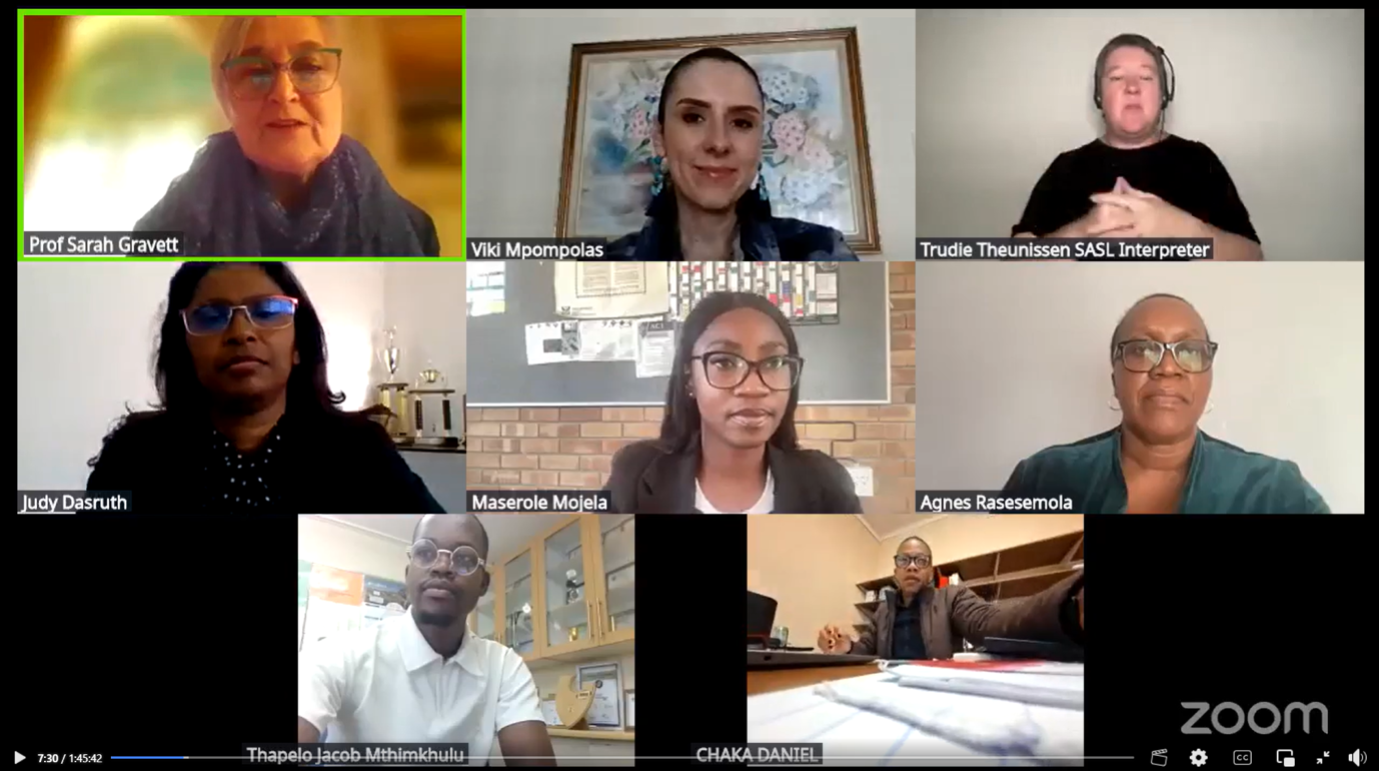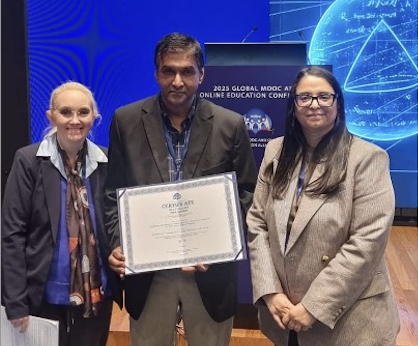In a recent collaborative event hosted by the University of Johannesburg (UJ) Library and the Education Sector Committee of the National Commission for UNESCO in South Africa on the 22nd of April, educators, policymakers, and stakeholders convened to delve into the critical question: What drives teachers to participate / not participate in professional development?

This dialogue is timely and essential. As the educational landscape evolves, continuous professional development remains a cornerstone for enhancing teaching quality and student outcomes. Yet, participation rates among teachers vary significantly, prompting a closer examination of underlying factors.
Through this interactive webinar, we found that teachers were more inclined to participate in continuous professional development when they felt supported and acknowledged by the school as noted by Viki Mpompolas. Recognition and support from school leadership can significantly boost teachers’ motivation to pursue professional growth. Many of the other speakers echoed this sentiment, with Thapelo Jacob Mthimkhulu and Judy Dasruth going further to say that teachers, especially the newer generations, have a desire to improve and grow their skills to better accommodate and educate their students.
As stated by Chaka Daniel and Maserole Mjela, continuous professional development programs also allow teachers to share experiences and create communities amongst themselves where they can provide support and guidance when needed. As such, opportunities that offer practical strategies, align with their teaching contexts, and provide avenues for collaboration often see higher participation rates.
Conversely, several obstacles hinder teacher participation in continuous professional development. Time constraints, heavy workloads, and lack of access to quality programs are common challenges. Professor Sarah Garvett iterated that ‘within the stressed environment of teaching, teacher development must really provide value, otherwise teachers will continue to be reluctant to participate’.
Another major hindering factor to teacher development is the lack of programs that represent the realities of teaching within a classroom. Maserole Mojela mentions that in her experience, development programs have been discouraging as they tend to generalise the teaching experience with the mentality of an ideal classroom without recognising the reality that many teachers face issues due to various factors. This can come in the form of a lack of resources, difficult students, a lack of support and other factors.
Addressing these challenges requires a multifaceted approach:
Continuous professional development programs need to be designed in a way that is context-specific and directly applicable to teachers’ daily experiences. They should provide platforms for collaboration and teacher engagement where teachers can share their personal insights, challenges and successes.
Additionally, teachers deserve more support from institutions, including time allocation and resources to facilitate teacher participation. Recognition from the institutions also plays a pivotal role in motivating teachers to attend continuous development programs. Recognition reinforces the value placed on continuous learning by acknowledging and celebrating teachers’ commitment to professional growth.
As we strive to elevate educational standards, understanding and addressing the factors influencing teacher participation in professional development is paramount. As a final statement, Agnes Rasemola stated that: “Growth must be encouraged not enforced”. By creating supportive, relevant, and collaborative environments, we can empower and encourage educators to continually refine their craft, ultimately benefiting the learners they serve.



